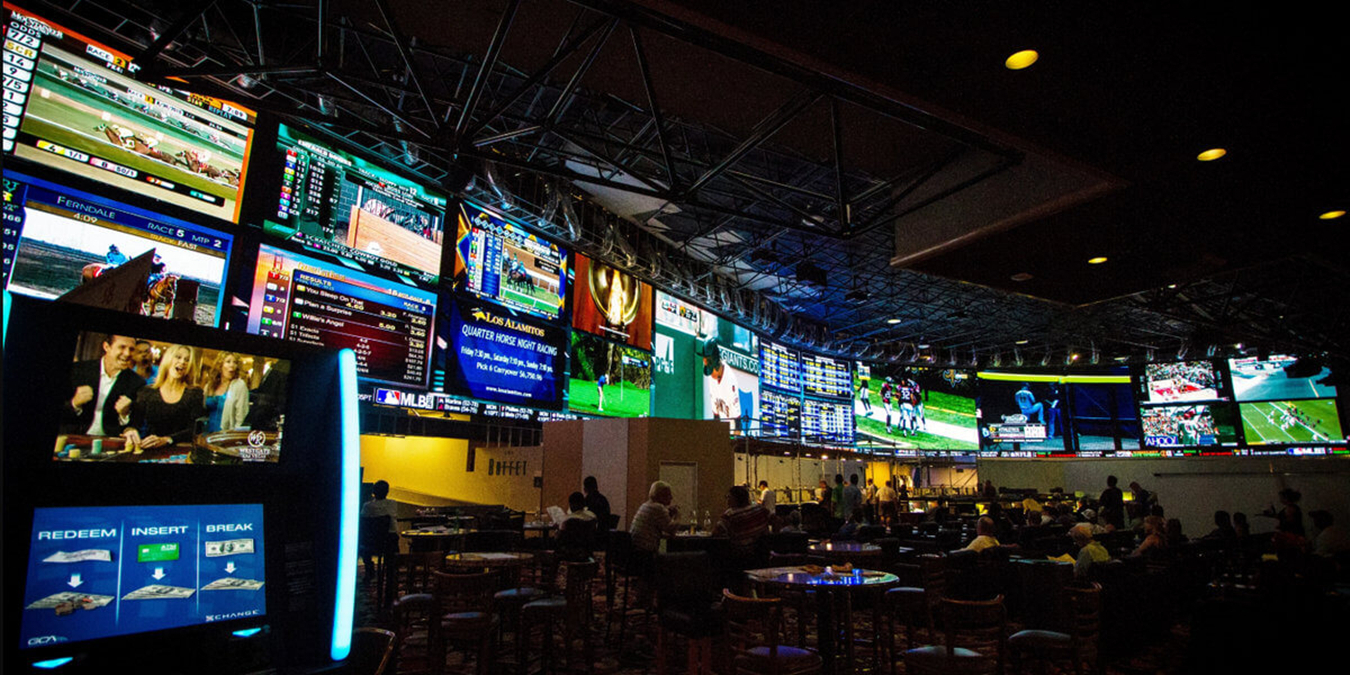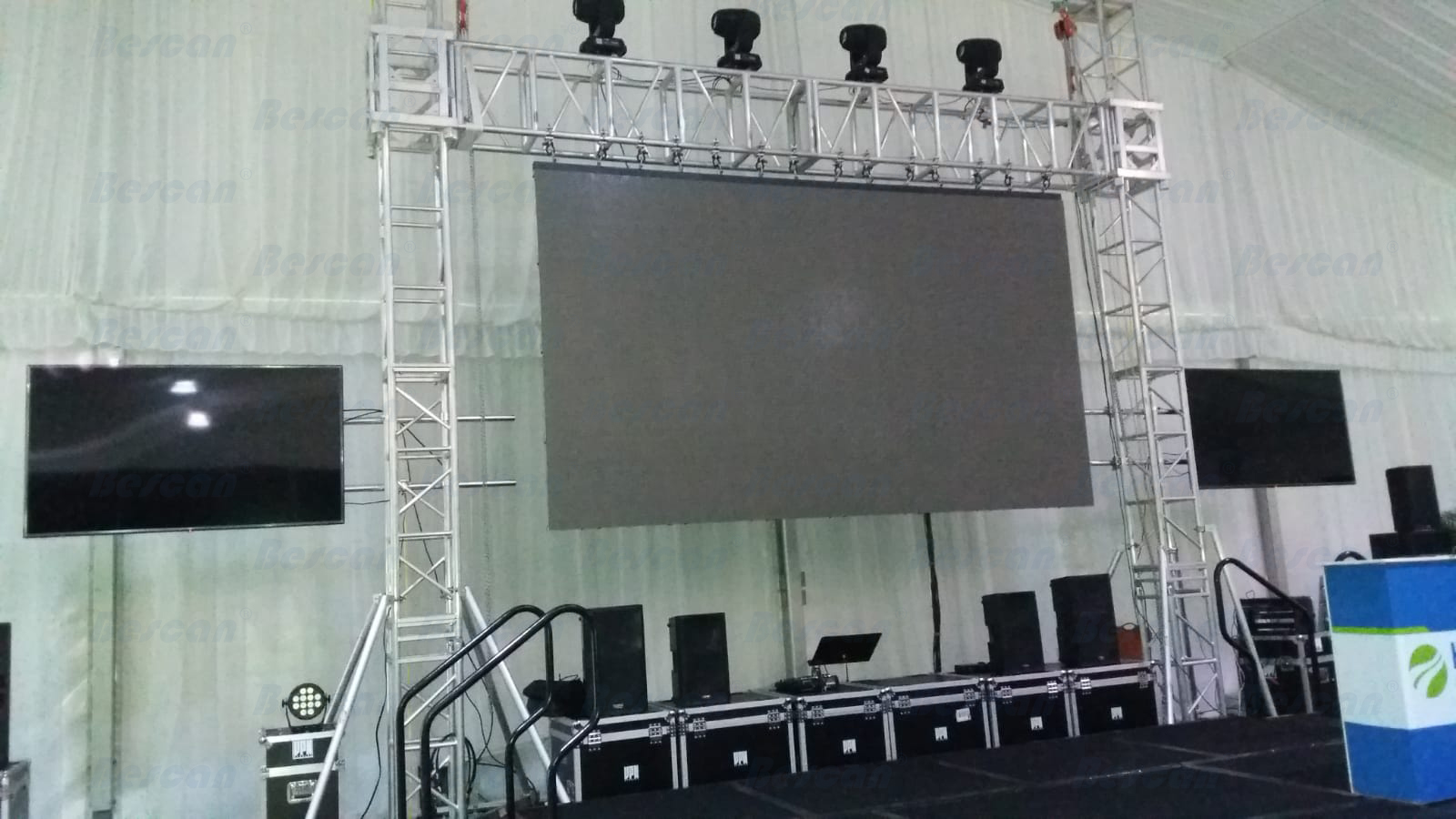
LED display screens are mainly used for outdoor and indoor advertising, display, broadcasting, performance background, etc. They are commonly installed on the exterior walls of commercial buildings, on the sides of major traffic roads, in public squares, indoor stages, conference rooms, studios, banquet halls, command centers, etc., for display purposes.
Composition of LED display
LED display screen generally consists of four parts: module, power supply, cabinet, and control system.
Module: It is a display device, which consists of circuit board, IC, LED lamp and plastic kit, etc., and displays video, pictures and text by turning on and off the three primary colors of red, green and blue (RGB) LED lamps.
Power supply: It is the power source of the display screen, providing driving power to the module.
Case: It is the skeleton and shell of the display screen, which plays a structural support and waterproof role.
Control system: It is the brain of the display screen, which controls the brightness of the LED light matrix through the circuit to present different pictures. Control system is the general term for controller and control software.
In addition, a set of display screen system with complete functions usually also needs to be composed of peripheral equipment such as computer, power distribution cabinet, video processor, speaker, amplifier, air conditioner, smoke sensor, light sensor, etc. These devices are configured according to the situation, not all of them are required.
LED display installation
Generally, there are wall-mounted installation, column installation, hanging installation, floor-standing installation, etc. Basically, steel structure is required. The steel structure is fixed on a solid fixed object such as a wall, roof, or ground, and the display screen is fixed on the steel structure.
LED display model
The model of LED display screen is generally indicated by PX, for example, P10 means the pixel pitch is 10mm, P5 means the pixel pitch is 5mm, which determines the clarity of the display screen. The smaller the number, the clearer it is, and the more expensive it is. It is generally believed that the best viewing distance of P10 is 10 meters away, the best viewing distance of P5 is 5 meters away, and so on.
LED display classification
According to the installation environment, it is divided into outdoor, semi-outdoor and indoor display screens
a. The outdoor display screen is completely in the outdoor environment, and it is required to have rainproof, moisture-proof, salt spray-proof, high temperature-proof, low temperature-proof, UV-proof, lightning-proof and other properties, and at the same time, it must have high brightness to achieve visibility in the sun.
b. The semi-outdoor display screen is between outdoor and indoor, and is generally installed under the eaves, in the window and other places where rain cannot reach.
c. The indoor display screen is completely indoors, with soft light emission, high pixel density, non-waterproof, and suitable for indoor use. It is mostly used in conference rooms, stages, bars, KTVs, banquet halls, command centers, TV stations, banks and securities industries to display market information, stations and airports to display traffic information, advertising announcements of enterprises and institutions, live broadcast backgrounds, etc.
According to the control mode, it is divided into synchronous and asynchronous display screens
a. This is relative to the computer (video source). In short, the synchronous display screen that cannot be separated from the computer (video source) when working is called the computer (video source). When the computer is turned off (the video source is cut off), the display screen cannot be displayed. Synchronous display screens are mainly used on large full-color display screens and rental screens.
b. The asynchronous display screen that can be separated from the computer (video source) is called the asynchronous display screen. It has a storage function, which stores the content to be played in the control card. Asynchronous display screens are mainly used on small and medium-sized display screens and advertising screens.
According to the screen structure, it can be divided into simple box, standard box and frame keel structure
a. Simple box is generally suitable for large screens installed on the wall outdoors and large screens installed on the wall indoors. It requires less maintenance space and has lower cost than standard box. The screen body is waterproofed by external aluminum-plastic panels around and on the back. The disadvantage of using it as an indoor large screen is that the screen body is thick, generally reaching about 60CM. In recent years, indoor screens have basically eliminated the box, and the module is directly attached to the steel structure. The screen body is thinner and the cost is lower. The disadvantage is that the installation difficulty is increased and the installation efficiency is reduced.
b. Outdoor column installation generally chooses a standard box. The front and back of the box are waterproof, reliable waterproof, good dustproof, and the cost is slightly higher. The protection level reaches IP65 in the front and IP54 in the back.
c. The frame keel structure is mostly small strip screens, generally mainly walking characters.
According to the primary color, it can be divided into single-primary color, dual-primary color, and three-primary color (full-color) display screens
a. Single-primary color display screens are mainly used to display text, and can also display two-dimensional pictures. Red is the most common, and there are also white, yellow, green, blue, purple and other colors. It is generally used in store front advertisements, indoor information releases, etc.
b. Dual-primary color display screens are used to display text and two-dimensional pictures, and can display three colors: red, green, and yellow. The usage is similar to monochrome, and the display effect is much better than monochrome display screens.
c. Three-primary color display screens are generally called full-color display screens, which can well restore most of the colors in nature and can play videos, pictures, text and other information. They are mostly used for advertising screens on the exterior walls of commercial buildings, column screens in public squares, stage background screens, live broadcast screens for sports events, etc.
According to the communication method, it can be divided into U disk, wired, wireless and other methods
a. U disk display screens are generally used for single and dual-color display screens, with a small control area and a low installation position to facilitate plugging and unplugging of U disks. U disk display screens can also be used for smaller full-color screens, generally below 50,000 pixels.
b. Wired control is divided into two types: serial port cable and network cable. The computer is directly connected by wire, and the computer sends control information to the display screen for display. In recent years, the serial port cable method has been eliminated, and it is still widely used in fields such as industrial billboards. The network cable method has become the mainstream of wired control. If the control distance exceeds 100 meters, optical fiber must be used to replace the network cable.
At the same time, remote control can be performed remotely by accessing the Internet through a network cable.
c. Wireless control is a new control method that has emerged in recent years. No wiring is required. Communication is established between the display screen and the computer/mobile phone through WIFI, RF, GSM, GPRS, 3G/4G, etc. to achieve control. Among them, WIFI and RF radio frequency are short-distance communications, GSM, GPRS, 3G/4G are long-distance communications, and it uses mobile phone networks for communication, so it can be regarded as having no distance restrictions.
The most commonly used are WIFI and 4G. Other methods are rarely used.
According to whether it is easy to disassemble and install, it is divided into fixed display screens and rental screens
a. As the name suggests, fixed display screens are display screens that will not be removed once installed. Most display screens are like this.
b. As the name implies, rental screens are display screens for rent. They are easy to disassemble and transport, with a small and light cabinet, and all connecting wires are aviation connectors. They are small in area and have a high pixel density. They are mainly used for weddings, celebrations, performances and other activities.
Rental screens are also divided into outdoor and indoor, the difference lies in rainproof performance and brightness. The cabinet of the rental screen is generally made of die-cast aluminum, which is light, rust-proof and beautiful.
Post time: May-29-2024




